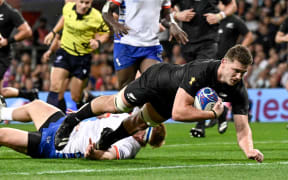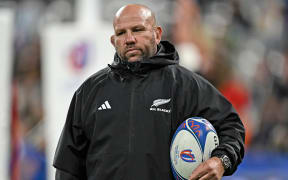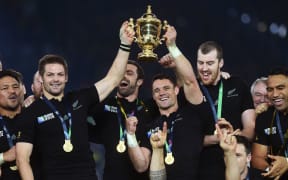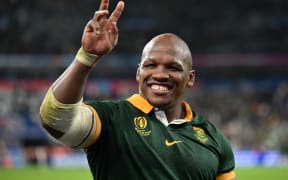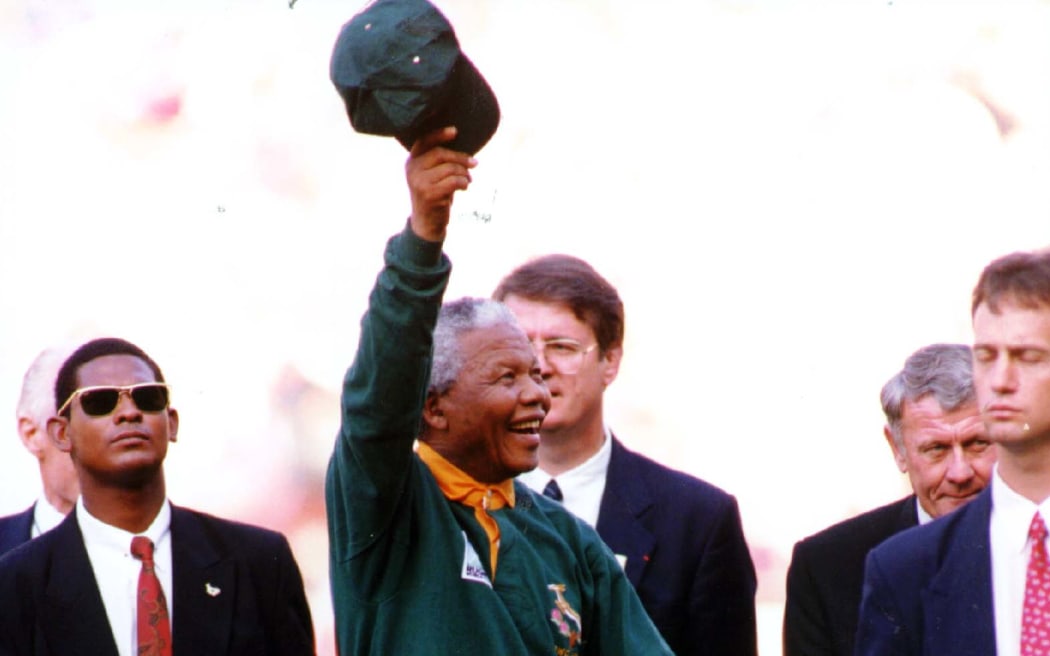
Nelson Mandela acknowledges the crowd at the Rugby World Cup 1995. Photo: Tertius Pickard / Photosport.co.nz
It's been 28 years since the All Blacks and Springboks last met in a Rugby World Cup final. The match, won 15-12 by the Boks at Ellis Park, may well be the most famous ever played and was set against a backdrop of drama, intrigue and politics. The following is a part one of a three-part extract from Jamie Wall's 2021 book The Hundred Years' War: All Blacks v Springboks.
The world marveled at Jonah Lomu and pronounced the All Blacks almost unbackable favourites, a far cry from where they'd been at the start of the year. The Springboks had tried hard and done well but the dream would end under Lomu's trampling feet, after all, the All Blacks had handily defeated the Springboks the last time they'd met in Johannesburg. In fact, the last time they'd lost to the Springboks was at Athletic Park in 1981.
Then the All Blacks went and had lunch on the Thursday before the final and got sick. Laurie Mains recounted how much of a heart-dropping moment it was: "Zinny came out and told us: half the team is up in Doc's room spewing or got the runs. My very worst fears had been realised."
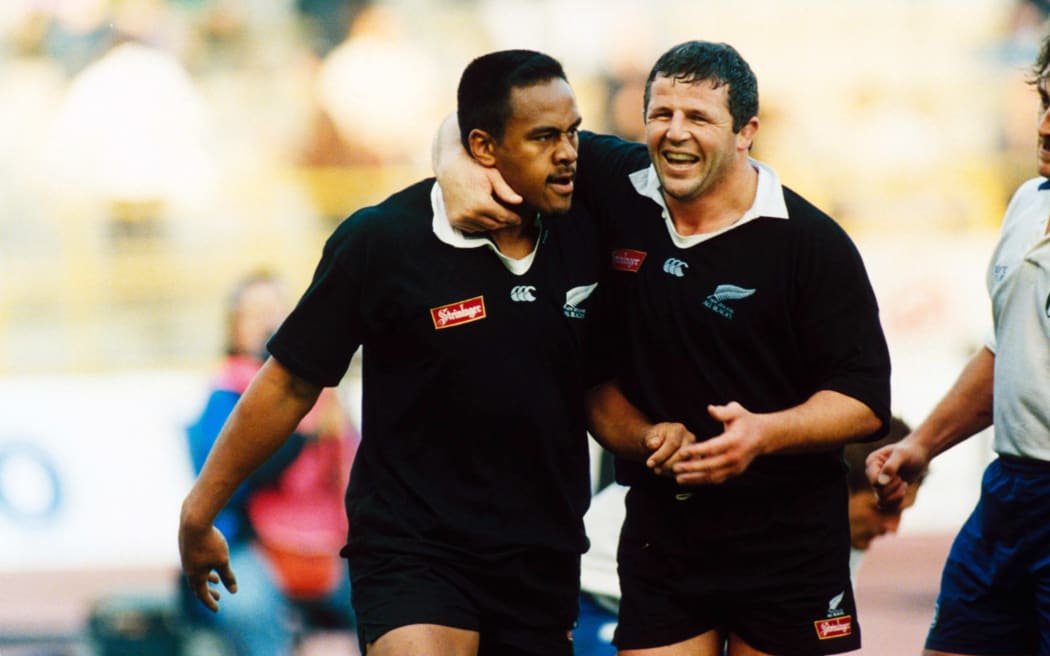
Jonah Lomu and Sean Fitzpatrick. Photo: Photosport
Thus began the biggest whodunnit in the history of the game. Up until this point, the team had had a chef specifically assigned to them that worked out of spare kitchen space at the team's hotels. For some reason, this was unable to be arranged for the week of the final. Suspicions were already in place that something like that may be a possibility anyway, as there had apparently been an attempt on the Cavaliers in 1986.
"We didn't want word leaking out" said Brian Lochore. "We didn't want the South Africans to think they had any physical or psychological advantage over us."
While this was the old days and the ability to control information like that was a bit easier, word did still seep out that something was up by the day of the game. It didn't make it as far back as New Zealand, where fans impatiently counted down till the early hours of the morning and kick off of the World Cup final. Little did they know that most of the team had spent the previous couple of days vomiting and rolling around on the floor. Rumours have abounded ever since, but nothing has ever been proven to change the official story that the All Blacks were simply victims of extremely bad luck, but Rory Steyn, Nelson Mandela's head of security publicly stated that: "The odds were on the All Blacks, the money was on the All Blacks and I think someone needed to level the odds somewhere."
But All Black captain Sean Fitzpatrick wasn't really fussed as to whether it was a nefarious planned act, saying:
"There was definitely food poisoning. And the question is whether it was on purpose or not. For me, I don't know and to be honest I don't really care."
What Fitzpatrick was more concerned about was the emotional effect that South Africa's secret weapon was going to have. His fears were justified as the team lined up in the sunshine of the Johannesburg afternoon of the final, staring up at the packed stands.
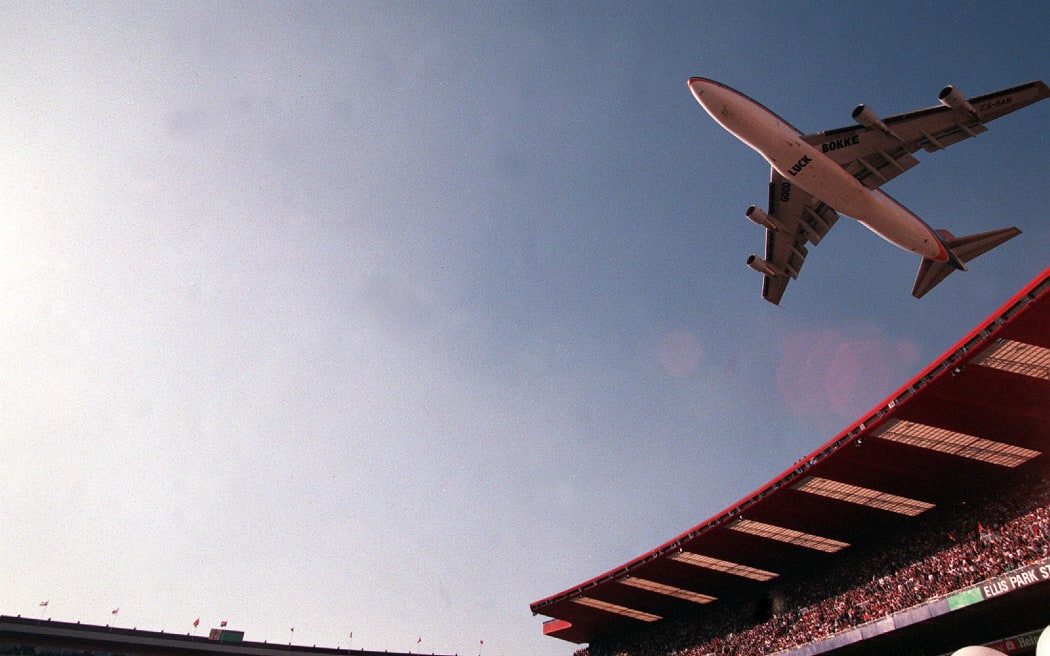
The plane flies over the stadium with a good luck message for The Springboks. Photo: ©INPHO/Billy Stickland
Whether intended or not, the food poisoning had at least eased off enough to actually allow the All Blacks to be lining up in front of 60,000 people at Ellis Park for the final. The closing ceremony was about what could be expected from the mid-90s, with a lot of balloons, children and cheesy music. That was all drowned out significantly when a South African Airlines 747 cruised over the top of the grandstand, an awful lot lower than it should have. The plane, nicknamed 'Lebombo' after the mountain range in the north east of the country, was an advertising stunt cooked up by the Johannesburg branch of the international agency Leo Burnett, on behalf of SAA. Under the plane's wings read 'Good Luck Bokke'.
In any other event, a plane that big flying that low would be the biggest talking point of an otherwise by the numbers build up to such a big game. But then out he strode. If someone had indeed poisoned the All Blacks, the Springboks upped the ante by bringing out the biggest weapon they had. Nelson Mandela, after 27 years locked up in a cell, was wearing a Springbok jersey and waving to the Ellis Park grandstand. The same stands that stood defiant and belted out Die Stem during a minute's silence three years before roared their approval for one of the greatest men who ever lived. Not only was he in their colours, but his jersey was marked with the same number six as the Springbok captain.
"You stood there listening to them chanting: 'Mandela! Mandela!', as he walked down the tunnel wearing Francois Pienaar's No 6 Springbok jersey. It just showed the power of a man, and how he saw that event as an opportunity to unite a country." said Fitzpatrick.
This, more than anything else in any game they'd ever been involved with, had an effect on the All Blacks. So much so, it's become far more palatable for the players involved to readily admit it, which is more than you can say about the allegations of being deliberately food poisoned. For a team that almost fanatically prides itself on never making any excuses for losing or even poor performances, this one incredible moment has gone down as the moment when the All Blacks knew that day was going to be an awful lot tougher than they expected.
Mandela walked along the lines of men, warmly greeting and shaking hands. Next to him strode South African Rugby boss Louis Luyt with his green blazer and plugged-in grin, introducing the players and probably already counting the money he was going to make out of this iconic moment. Pienaar had no idea Mandela was going to be there.
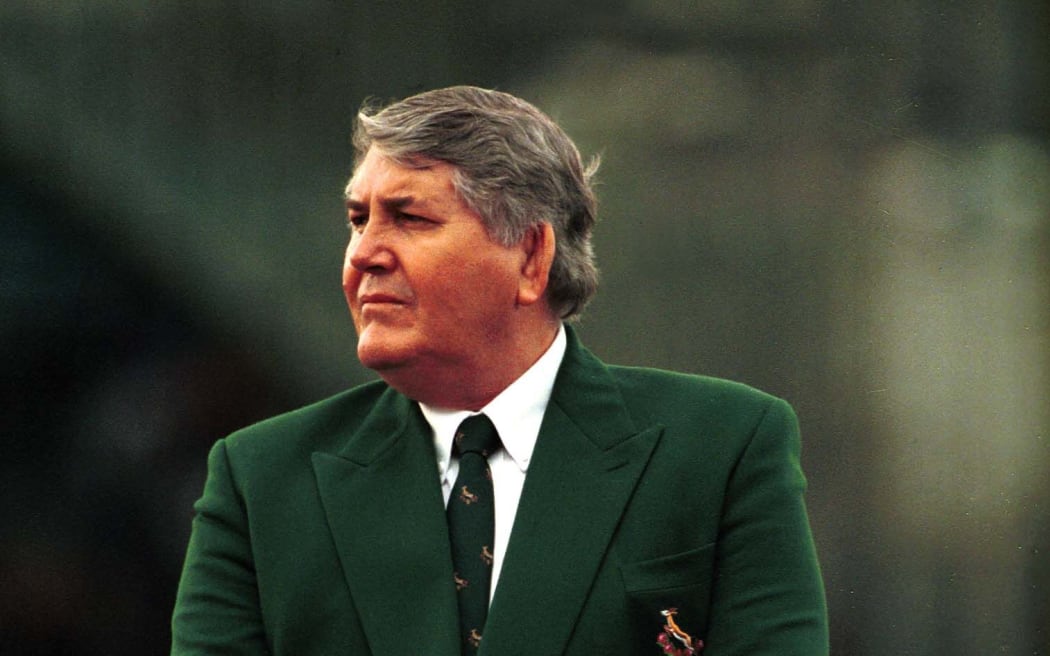
Louis Luyt - South African Rugby boss at the time of the 1995 World Cup. Photo: Photosport
"I never, ever in my life thought he'd wear a Springbok jumper. He just said 'good luck' and then he turned around and there was a number six on his back. That was me. I couldn't sing the anthem, I was so emotional."
Over on the All Blacks' side, Fitzpatrick was comprehending the situation only the way a New Zealander could.
"I always wondered how it would've been if our prime minister had walked down the tunnel wearing my jersey, whether it would've made any difference. And unfortunately, with all due respect, I don't think it would've."
Due respect was about all New Zealand's then-prime minister Jim Bolger would have got. It's about all any world leader in 1995 short of Kim Il-Sung would have got, really. Except Nelson Mandela.
*Part Two:The Game will be published on Thursday.

